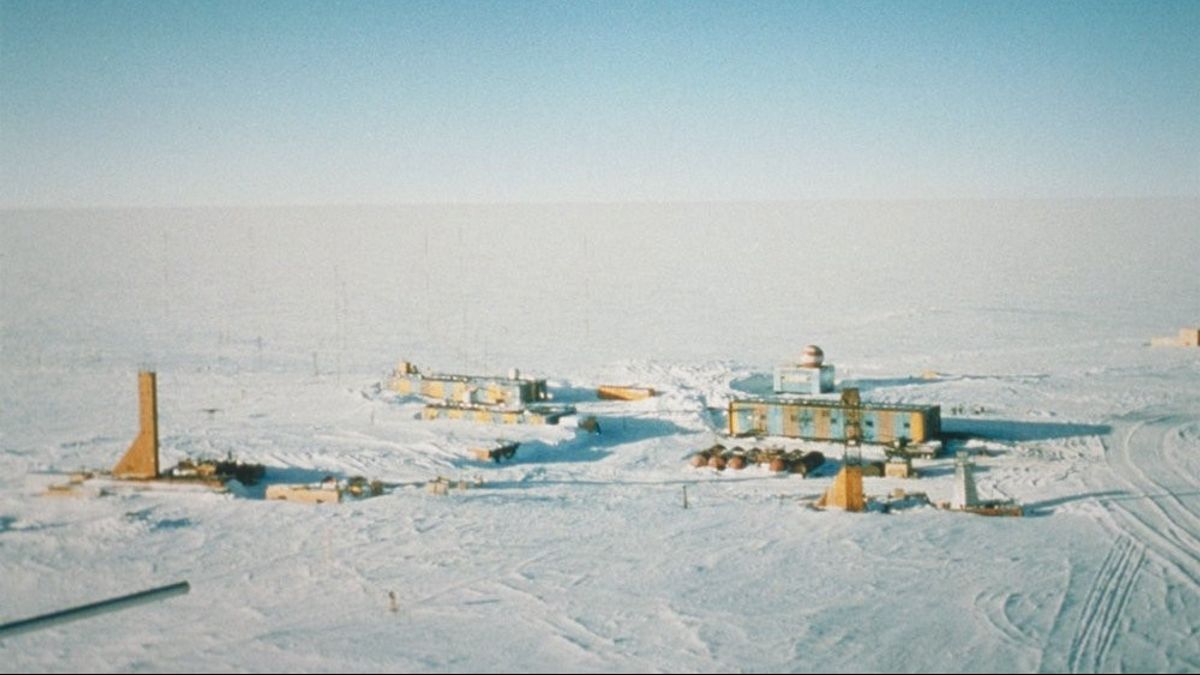JAKARTA - On July 21, 1983, the temperature at Russia's Vostok research station in Antarctica dropped to -89.2 degrees Celsius, which is 54 degrees cooler than the average winter there. This temperature is the coldest temperature ever recorded on Earth.
The Vostok site in Antarctica was selected by the Soviet Union for research with the aim of drilling deep into the ancient ice. French and United States (US) scientists also participated in core activities at the site.
About 25 people are usually based in Vostok in the summer months, during which time the average temperature is -30 degrees Celsius and is classified as “summer.” While only 13 people are based in winter.
The people at the station weren't just battling the extreme cold. They also face air with minimal humidity or oxygen content, strong winds, power cuts, and about four months of only nighttime.
Well-wrapped humans are expected to be able to survive in extreme conditions. If anything is not strong, they start vomiting, headaches, and high blood pressure.
Mystery of cold air
In fact, according to the observations of a physiologist, they also experience "a fear of going to sleep at night for fear of stopping breathing." Scientists from the British Antarctic Survey (BAS) and the Arctic and Antarctic Research Institute (AARI) in Russia then solved the mystery of why it was so cold at that time.
Scientists used a computer developed to simulate the future evolution of Antarctica's climate. The simulations were combined with weather charts and satellite imagery of the area.
Citing Live Science, the researchers found the relatively warm air, which normally flows over the Southern Ocean to the Antarctic plateau, almost stopped during this period. The flow of cold air surrounding Vostok prevents the mixing of warmer air from lower latitudes.
This phenomenon isolates the station area from the warm airflow and causes near-optimal cooling conditions. Another factor is the absence of cloud cover that traps heat.

Scientists found tiny particles of ice floating in the air, known as diamond dust. This allows more heat from the continent's icy surface to be lost to space. This finding shows how extreme the universe is.
"Differentiating between natural variability and human-caused changes in the Earth's atmospheric climate is at the heart of our research, and we wanted to understand why this 'normal' weather system became so unbalanced," said John Turner, member of the BAS.
"Our findings suggest that this is a natural event, but it is an important reminder of how extreme natural events on Earth can be and we must always consider the potential for such anomalies to occur."
Extreme temperatures in Greenland
Extreme cold temperatures have also occurred in the western hemisphere, namely in Greenland. On January 9, 1954, temperature measurements were taken by researchers on the Greenland expedition. The result, when the cold temperature reached -66.1 degrees Celsius.
Expedition leader CJW Simpson said Greenland was a "giant ice basin." In a two-year note that he and his team captured during their time there, Simpson writes: Nearly all the natives settled on the west coast, where warm ocean currents dissipated the chill of the climate.
"The northeast coast where we are based is much more difficult to access; being blocked by a strip of ice that may be up to 160km wide and forcing a passage through eastern Greenland is difficult and dangerous," the note added.
Previously the team had carried out temperature measurements with the help of the British Air Force. But they took temperature measurements again in the summer of 1954. The area where they took temperature measurements was inhabited only by polar bears.
While the Earth's northern hemisphere has also recorded the coldest temperatures. The small town of Oymyakon in Russia is the coldest permanently inhabited area. The lowest temperature was measured on February 6, 1933. At that time the temperature in the city reached -67.7 degrees Celsius.
Citing notes from The World, the average daily temperature in Oymyakon for January is around -41 degrees Celsius. But in July, the thermometer was found to have measured up to -70 degrees Celsius. It also makes it the most schizophrenic city in the world. There are only less than 500 people living there.
*Read other information about WORLD HISTORY or read other interesting articles from Putri Ainur Islam.
TODAY'S HISTORY MoreThe English, Chinese, Japanese, Arabic, and French versions are automatically generated by the AI. So there may still be inaccuracies in translating, please always see Indonesian as our main language. (system supported by DigitalSiber.id)









